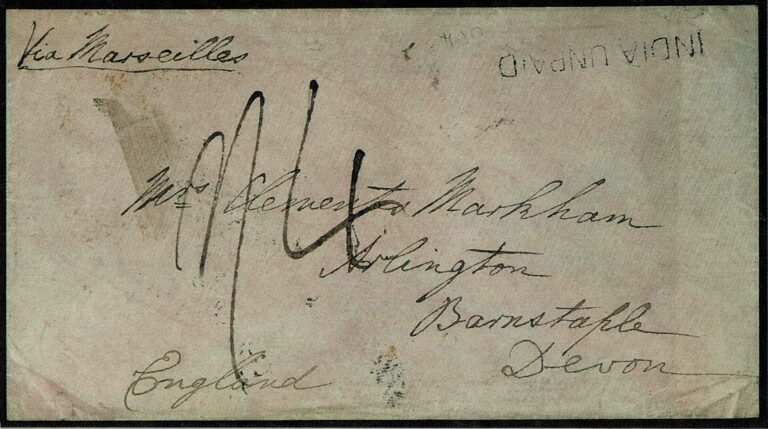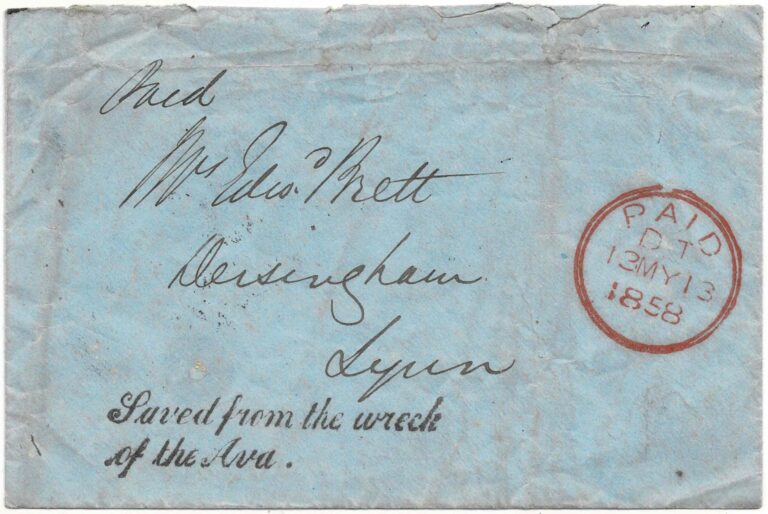A few days back, T. Kesava Prasad of Bengaluru (earlier Bangalore) shared images of a cover (no contents) (Figure 1 and 2) and requested me to help him understand its postal history.

Noting on the front right by the recipient indicates it was sent on 14 November 1828. A black rectangular OOTACAMUND / POST NOT PAID (Giles 2; early use) handstamp can be seen on the top left. The front of the cover has the manuscript ‘P. N. P. Rs 1 – 6’ in the centre. To the right is ‘Rs 4 1/2 RupeeWgt’. Finally, just below the latter is inscribed ‘Double’.
On the rear, a black circular MADRAS BEARING POSTAGE (Giles 12) is handstamped and is dated 23 November.

Postal History
Now on to decipher the manuscript markings so as to understand the postage.
‘P. N. P’ is the abbreviation for ‘Post Not Paid’ and indicates that a postage of Rupees 1 and 6 annas is due from the recipient. At this time, the currency in British India was 12 pies being equivalent to 1 anna and 16 annas comprising 1 Rupee.
How do we arrive at Rs 1-6? In his article, “Postal Rates in the Madras Presidency 1800-1837” published in India Post 27 no. 2 whole no. 116 (April-June 1993): 42-45, Max Smith lists the inland rates of this presidency. This letter would have been charged under the 1823 rates, the table of which is reproduced here (Figure 3).

The distance between Ottacamund and Madras was 350 miles; a later table of rates between Madras and various places in the Presidency confirms this. In his 1989 work, Catalogue of the Handstruck Postage Stamps of India, Hammond Giles gives the distance as 356 miles.
If we use the numbers shown in Figure 3, we see that the single rate (single rate being an item whose weight did not exceed that of a one Rupee coin) for a distance of 350 miles was 11 annas. This letter is endorsed as a double and hence the postage on this should be 22 annas or 1 Rupee 6 annas or in short Rs 1-6. This number is clearly visible on the top centre.
The question that arises in one’s mind is – what about ‘Rs 4 1/2 RupeeWgt’? Wgt is obviously weight but if this letter weighed 4.5 Rupees, then it should have been charged 5 rates or 55 annas.
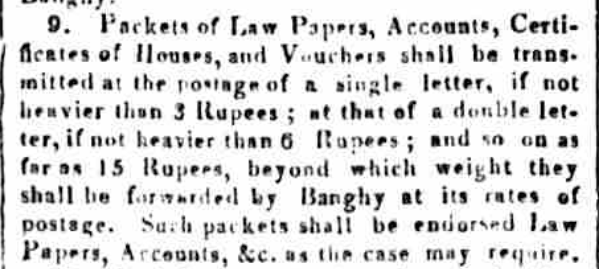
The answer lies in paragraph 9 of the said regulations (Figure 4). It says,
Packets of Law Papers, Accounts, Certificates of Houses, and Vouchers shall be transmitted at the postage of a single letter, if not heavier than 3 Rupees; at that of a double letter, if not heavier than 6 Rupees; and so on…Such packets shall be endorsed Law Papers, Accounts, &c. as the case may require.
The answer is immediately clear. Law papers were charged at a concessionary rate. This particular letter weighed 4.5 Rupees or double weight and hence the postage charged is correct at Rs. 1-6 (or 2 times 11 annas).
The late Captain Robert Shedden
The law papers pertain to one Captain Robert Shedden (1789-1828) of the 12th Regiment of the Madras Native Infantry who had died earlier that year (Figure 5). ̌His name and the word ‘Deceased’ next to it on the right suggests that the law papers probably pertained to his estate or will.

Robert Shedden was born on 19 November 1789 in a landowning family (lands of Morishill) near Beith, North Ayrshire, Scotland. He sailed to India as a cadet in May 1808 on the ship Traverse; incidentally the ship was wrecked in the Bay of Bengal and the ship and cargo lost but Robert survived with nothing more than the clothes on him. On 20 March 1814 he was appointed lieutenant in the 8th Regiment and in 1826 received his commission as captain in the 12th. He died suddenly due to a stroke of apoplexy at Vizianagram (in present day Andhra Pradesh) on 25 July 1828.
Ootacamund
While researching the postal history aspects of this cover, I was wondering if it was not an early cover from Ootacamund. I started researching on the town and decided to pen what I learnt here. No apologies for this digression!
The town of Ootacamund is situated in the Nilgiris (Neilgherry) Hills. The hills are in fact a mountainous plateau, about 40 miles long by 15 miles broad, at the junction of the ranges of the Western and Eastern Ghats. It is around 2,240 meters or 7,350 feet above sea level.
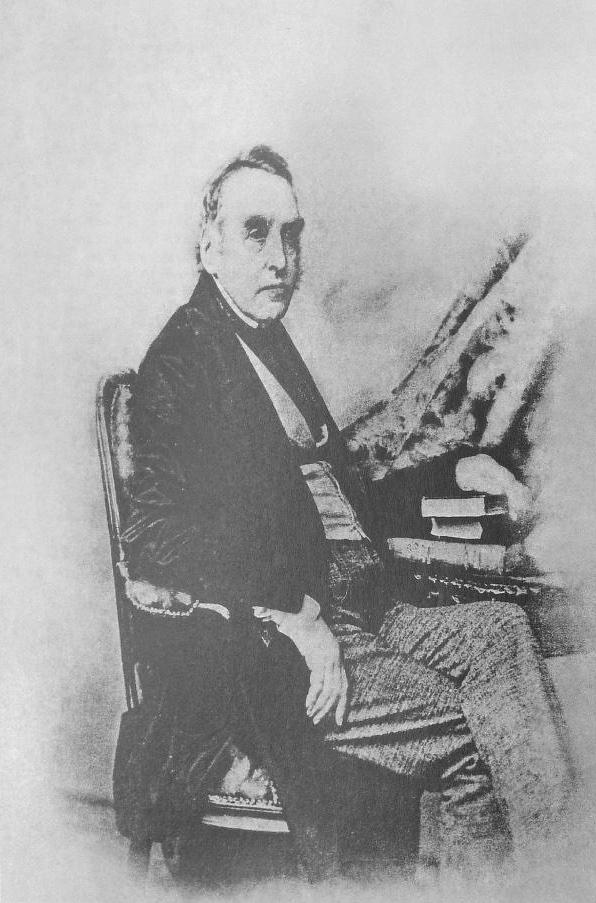
In 1818, two civilians, Whish and Kindersley, Assistant and Second Assistant respectively to the then collector of Coimbatore, John Sullivan (Figure 6), visited the surrounding areas. Sullivan himself came in 1819 and fell in love with the hills. However, the first expedition to actually visit the place where Ootacamund exists probably took place in February 1820. Various names such as Wotokymund, Whotokaymund, Whotakaymund, Whotokamund, Wootaycamund, and Wuttacamund were used before Ootacamund prevailed; surely by 1828 as seen from the post office handstamp.
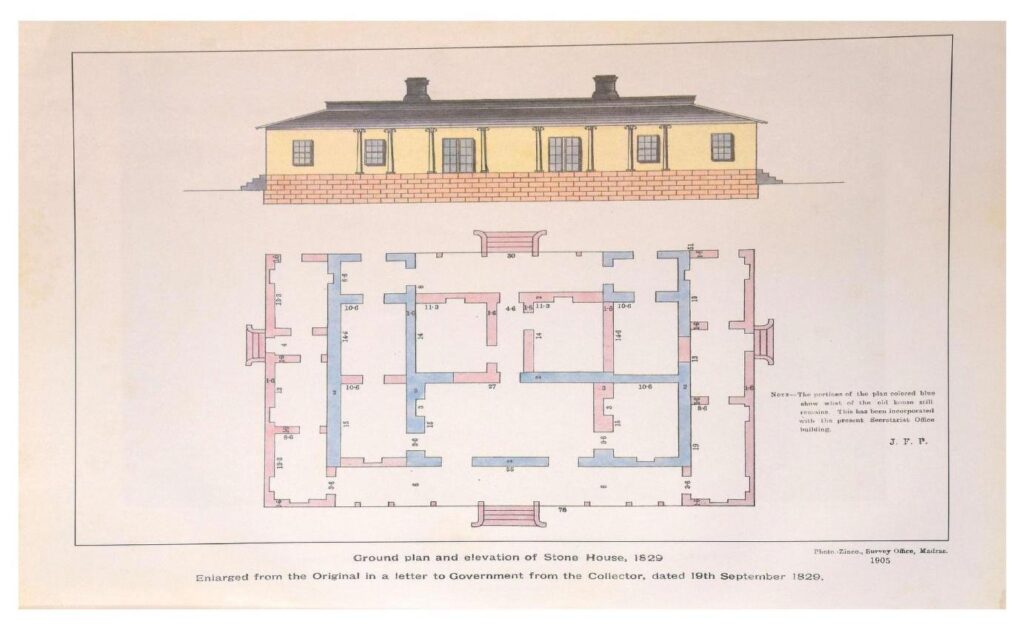
In 1822, Sullivan bought a piece of land from the local Todas; a village (mund) stood there. He constructed a house called Stonehouse (Figure 7) which was habitable by 1823. Between 1823 and 1827 he spent a large portion of his time there. Soon his European subordinates followed his lead of living in the hills!
The first post office was opened in 1826 with a writer and two peons as part of the establishment. When this letter was dispatched, Ootacamund must been sparsely populated. Plot no. 5 in the plan of the compounds in the cantonment (top right of Figure 8) is shown as belonging to one Dr. Shedden. This is Dr. Alexander Shedden, brother of Captain Shedden, who was then residing there; now the link between the Captain and the Ootacamund origin of this letter becomes clear. The ‘Govt. Bungalow’ seen in the centre later became the post office.

Acknowledgement
Max Smith for pointing me to paragraph on law papers in the 1823 Post Office Regulations.
Bibliography
- Dobie, James. Memoir of William Wilson of Crummock. Edinburgh, 1896.
- Emeneau, M. B. “Ootacamund in the Nilgiris: Some Notes.” Journal of the American Oriental Society 83, No. 2 (April – June 1963): 188-193.
- Giles, D. Hammond. Catalogue of the Handstruck Postage Stamps of India. London: Christie’s Robson Lowe, 1989.
- Price, Sir Frederick. Ootacamund: A History. Madras: The Superintendent, Government Press, 1908.
- Smith, Max. “Postal Rates in the Madras Presidency 1800-1837.” India Post 27 no. 2 Whole no. 116 (April – June 1993): 42-45.
- Mason, A. W. and Brown, G. H. The East-India Register and Directory, for 1828. London: Hon. East India Company, 1828.

